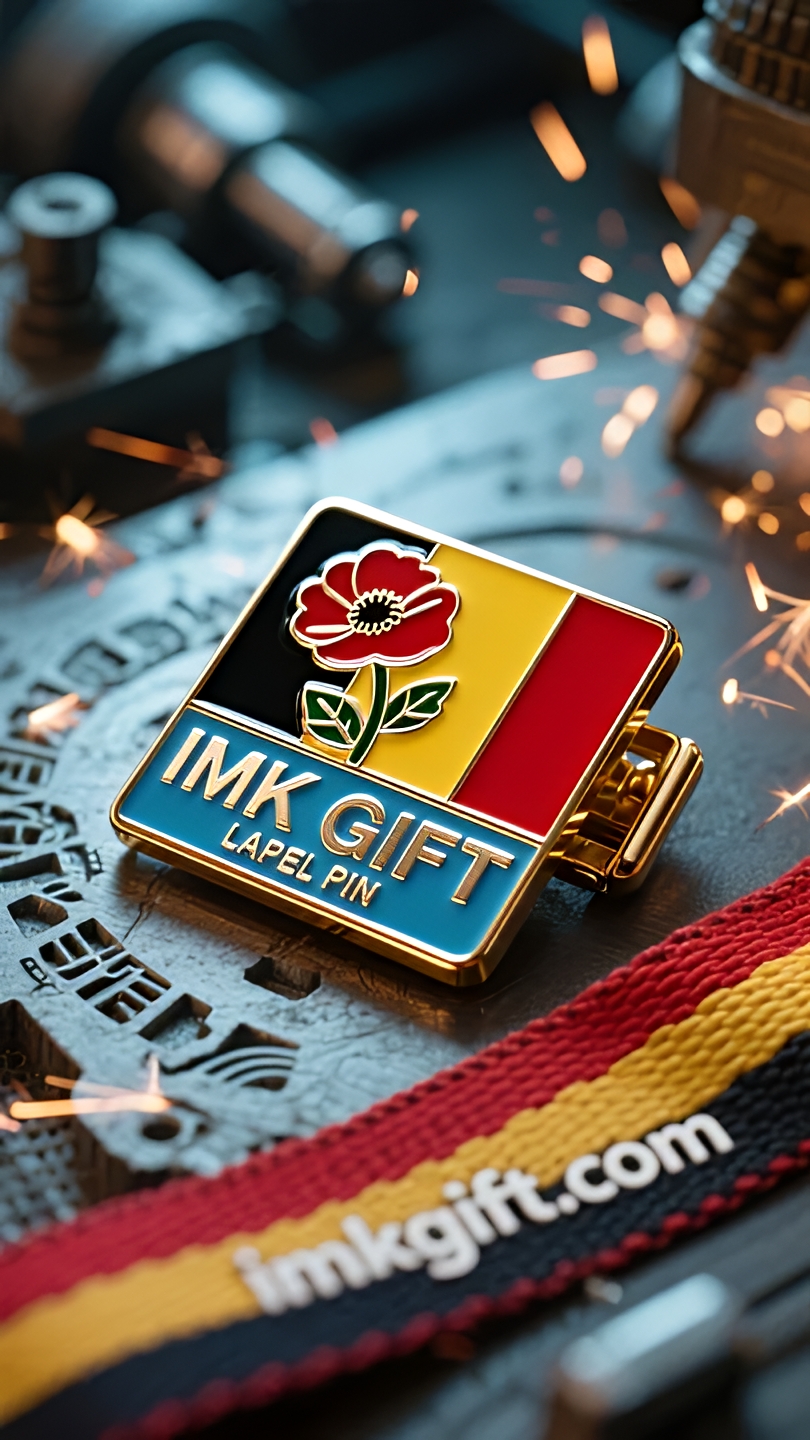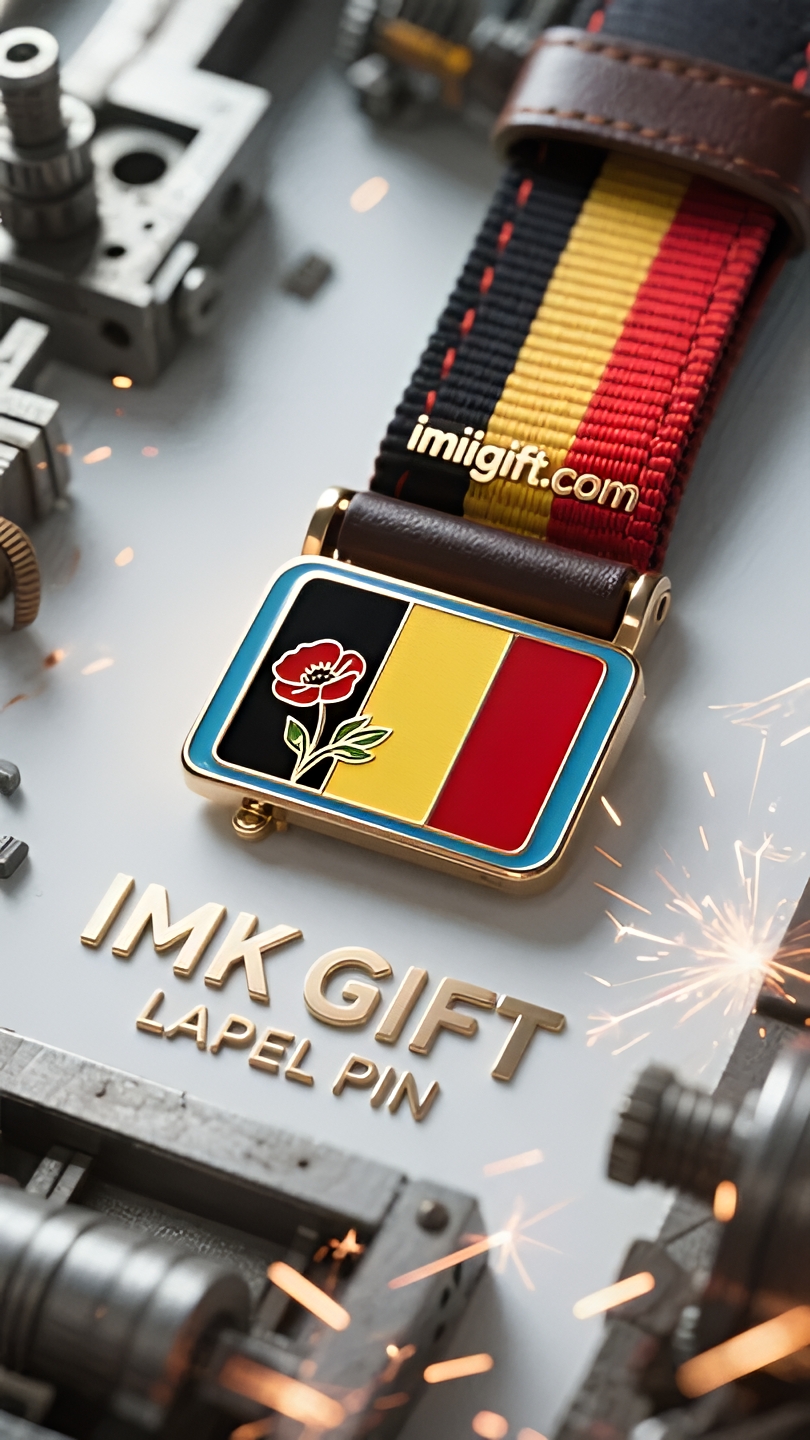in987-Red-poppy-and-tricolor-flag-the-light-of-perseverance-that-never-fades
▼
Every November, the poppy belt buckle worn by Belgians stands out among the black, yellow and red national flag. This metal buckle, made from bullet shells used by World War I soldiers, carries a deeper meaning than the scars of war – it is a vow of rebirth from the broken, and a spiritual bond that transcends time and space. After the signing of the armistice on November 11, 1918, the blooming poppies on the battlefields of Flanders dyed the scorched earth red. Belgian soldiers melted the bullet shells they picked up into belt buckles, and under the national flag that symbolizes strength (black), wisdom (yellow) and courage (red), they forged a token of peace with the embers of war. Each concave and convex pattern solidifies the soldier’s oath: not to bow to fate, and not to let suffering define the future. Today, when Belgians wear this belt buckle, the metal surface still retains the rough texture of the bullet shell. It reminds us that true tenacity is not indestructible smoothness, but to keep moving forward with scars. Just like the vibrant red in the tricolor flag, it is both the blood of the martyrs and the everlasting fire of life. When young people in modern cities put on this ornament, they are not only tying up the weight of history, but also the belief in weaving individual destiny with national spirit. Just as the shell is reborn as a talisman in the furnace, every ordinary person can forge his or her own tenacity into a light that illuminates others in the tempering of the times.
Cada noviembre, las hebillas de los cinturones con forma de amapola que usan los belgas resaltan sobre la bandera nacional negra, amarilla y roja. Esta hebilla de metal, que fue hecha a partir de un casquillo de bala hecho por un soldado de la Primera Guerra Mundial, tiene un significado más profundo que las cicatrices de la guerra: es un voto de renacimiento de lo roto y también es un vínculo espiritual que trasciende el tiempo y el espacio. Tras la firma del Armisticio, el 11 de noviembre de 1918, las amapolas florecieron en los Campos de Flandes, tiñendo de rojo la tierra quemada. Los soldados belgas fundieron los casquillos de bala que recogieron para fabricar hebillas de cinturón, forjando un símbolo de paz a partir de las brasas de la guerra bajo la bandera nacional que simboliza la fuerza (negra), la sabiduría (amarilla) y el coraje (roja). Cada línea irregular refleja el juramento del soldado: nunca inclinarse ante el destino y nunca dejar que el sufrimiento defina el futuro. Cuando los belgas usan hoy esta hebilla de cinturón, la superficie de metal aún conserva la textura rugosa del casquillo de la bala. Nos recuerda que la verdadera resiliencia no es ser indestructible y uniforme, sino seguir adelante con las cicatrices. Al igual que el rojo vibrante de la bandera tricolor, es a la vez la sangre de los mártires y el fuego eterno de la vida. Cuando los jóvenes de las ciudades modernas se ponen este adorno, no sólo atan el peso de la historia, sino también la creencia en tejer el destino individual con el espíritu nacional. Así como un casquillo de bala renace como talismán en un horno, cada persona común puede, a través del temple de los tiempos, forjar su tenacidad en una luz que ilumine a los demás.
每年11月,比利时人佩戴的虞美人皮带扣在黑黄红三色国旗间格外醒目。这枚由一战士兵用弹壳改造的金属扣,承载着比战争伤痕更深刻的寓意——它是破碎中重生的誓言,更是跨越时空的精神纽带。
1918年11月11日停战协定签署后,佛兰德斯战场盛开的虞美人染红了焦土。比利时士兵将捡拾的弹壳熔铸成皮带扣,在象征力量(黑)、智慧(黄)与勇气(红)的国旗下,用战火余烬锻造出和平的信物。每个凹凸的纹路都凝固着士兵的誓言:不向命运屈膝,不让苦难定义未来。
如今比利时人佩戴这枚皮带扣时,金属表面仍保留着弹壳的粗粝质感。它提醒着:真正的坚韧不是无坚不摧的光滑,而是带着伤痕继续前行。就像三色旗中跃动的红色,既是烈士的热血,也是永不熄灭的生命之火。
当现代都市的年轻人扣上这枚饰物,他们系紧的不仅是历史的重量,更是将个体命运与国家精神编织的信念。正如弹壳在熔炉中涅槃为护身符,每个平凡人都能在时代的淬炼中,将自己的坚韧锻造成照亮他人的光。
▼
Contact Us
📞 Tel: +0086-760-85286839
📧 Email: sales3@imkgift.com








